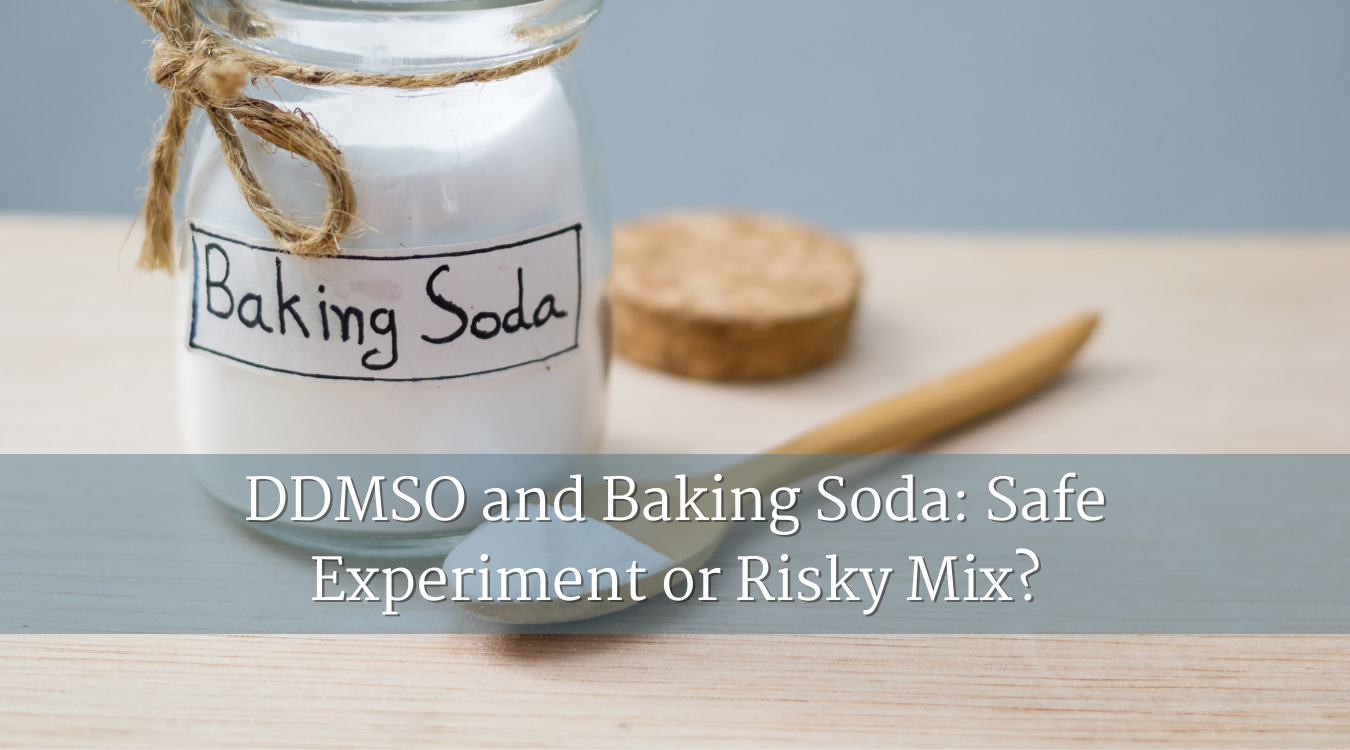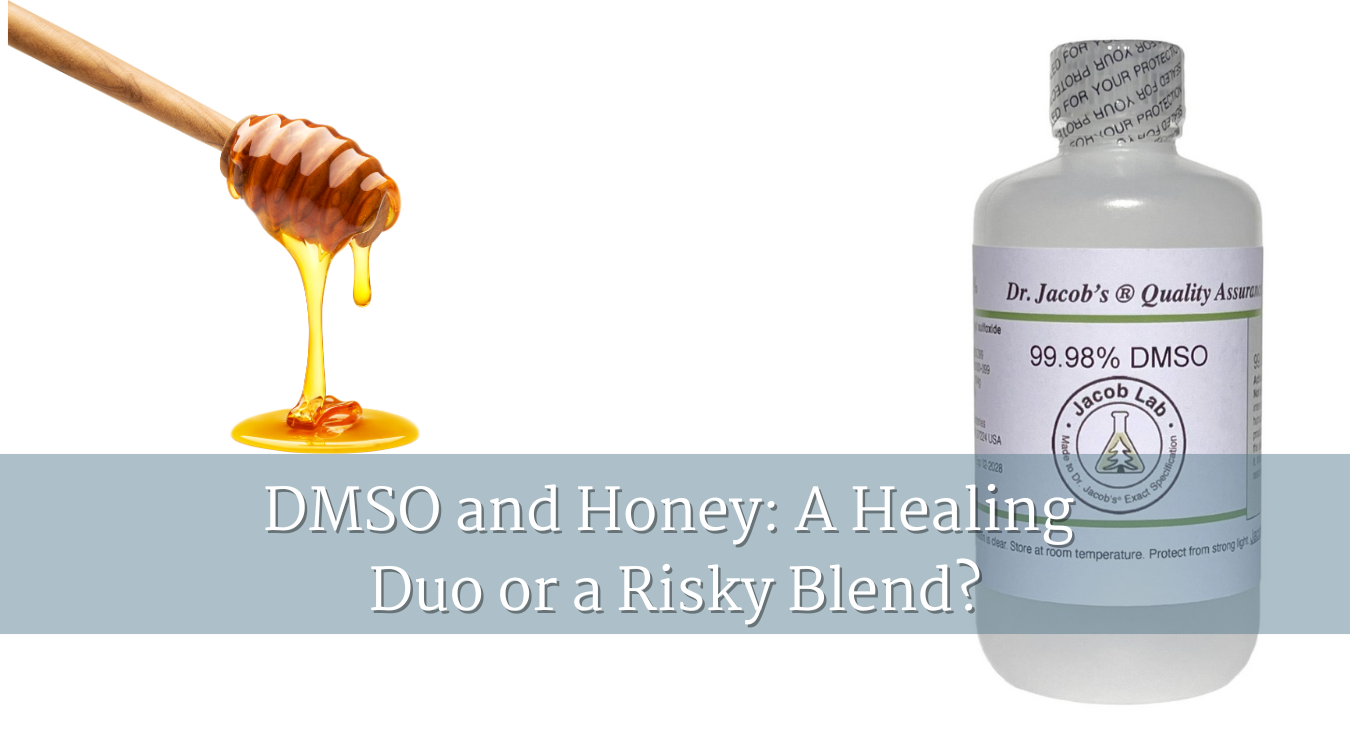
The Curiosity Behind the Mix of DMSO and Baking Soda
If you’ve spent time in alternative health forums, you’ve probably seen people mention combining DMSO with baking soda. The logic goes something like this:
-
Baking soda helps alkalise the body and neutralise acids.
-
DMSO carries compounds deeper into the body through the skin.
-
Therefore, together, they might enhance healing or fight inflammation.
But curiosity and safety are two very different things. Let’s explore this mix through the eyes of different experts.
🔬 The Science Behind It
Baking soda (sodium bicarbonate) is well established in medicine:
-
It’s used in emergencies to treat metabolic acidosis.
-
Small doses can relieve acid reflux or support urinary health.
-
Athletes even experiment with it for buffering lactic acid in high-intensity training.
DMSO (dimethyl sulfoxide) is a solvent that penetrates the skin barrier, reducing inflammation and carrying other molecules into tissues.
Together?
There are no clinical studies showing that combining DMSO with baking soda improves health outcomes. In fact, mixing the two may bypass the body’s natural protective systems and create unknown risks.
🩺 Dermatologist’s View
The skin is naturally slightly acidic (pH around 5.5). This acidity supports the “acid mantle,” a protective barrier that keeps harmful bacteria out and moisture in.
-
Baking soda is alkaline. Applied topically, it can disturb this balance, leading to irritation, dryness, or micro-cracks in the skin.
-
DMSO can carry baking soda molecules deep into the tissues, amplifying irritation or even creating chemical burns.
👉 A dermatologist would warn: “While baking soda is fine in a toothpaste or bath soak, it was never meant to be driven deep into your tissues with a solvent like DMSO.”
🥗 Nutritionist’s View
From a nutrition standpoint, baking soda can be helpful in specific, safe doses. For example:
-
A ½ teaspoon in water may temporarily soothe acid reflux.
-
In sports science, carefully measured sodium bicarbonate is used to delay muscle fatigue.
But these uses rely on digestion to buffer and balance the alkaline compound. Bypassing digestion with DMSO strips away the body’s natural regulatory safeguards.
👉 A nutritionist would say: “There are many proven, safe ways to support acid-base balance — DMSO is not part of that toolkit.”
🌀 TCM Perspective
Traditional Chinese Medicine doesn’t categorise remedies in terms of acids and bases. Instead, it looks at balance between Yin and Yang, warmth and coolness, dryness and dampness.
Baking soda has no traditional role in TCM, and DMSO, being an industrial solvent, sits completely outside the classical pharmacopeia. A practitioner might say: “If your system feels too acidic, the answer lies in diet, herbs, and lifestyle harmony, not chemical shortcuts.”
⚖️ Risks of Mixing DMSO with Baking Soda
-
Skin irritation and burns due to altered pH.
-
Unpredictable absorption — DMSO could carry too much sodium bicarbonate into circulation.
-
Lack of dosing guidelines — nobody knows what’s safe transdermally.
-
Potential systemic imbalance — blood pH is tightly regulated; forcing alkaline compounds past digestion could destabilise this balance.
✨ The Bigger Picture
It’s natural to look for shortcuts, but when it comes to DMSO and baking soda, the risks outweigh the imagined rewards. Each has its place:
-
Baking soda in the kitchen or medicine cabinet, used in traditional, safe ways.
-
DMSO in clinical or carefully guided alternative contexts, never as a carrier for random household compounds.
The bottom line? Don’t experiment with this mix. Respect each tool for what it can safely do.
🔗 Where to Learn More
-
Related: DMSO Safety Precautions
-
Related: DMSO and Honey
-
Foundation: What is DMSO and How Does It Work?




 DMSO and Honey: A Healing Duo or a Risky Blend?
DMSO and Honey: A Healing Duo or a Risky Blend?
 DMSO and MSM: A Powerful Duo for Pain and Inflammation?
DMSO and MSM: A Powerful Duo for Pain and Inflammation?














